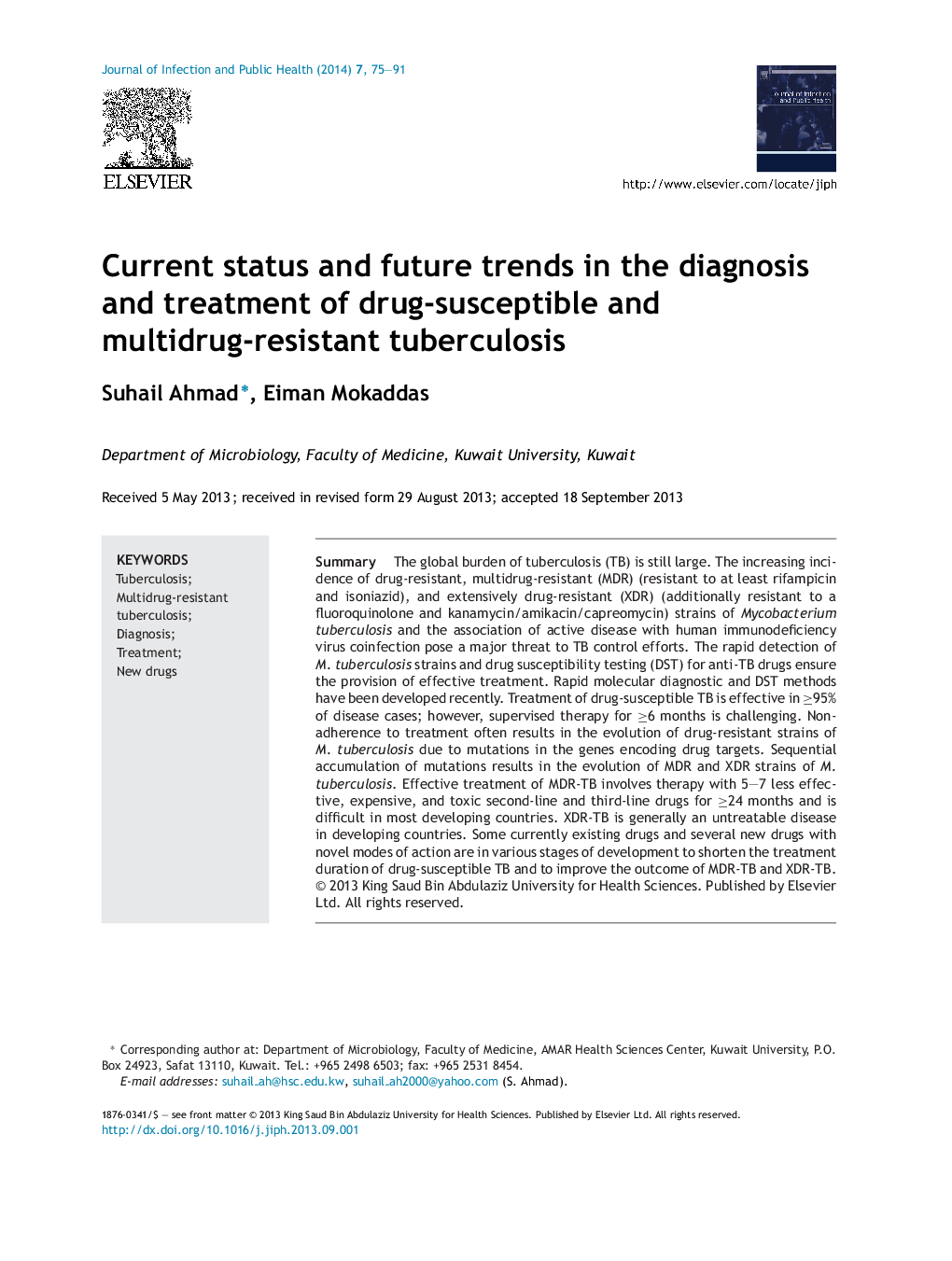| Article ID | Journal | Published Year | Pages | File Type |
|---|---|---|---|---|
| 3406264 | Journal of Infection and Public Health | 2014 | 17 Pages |
SummaryThe global burden of tuberculosis (TB) is still large. The increasing incidence of drug-resistant, multidrug-resistant (MDR) (resistant to at least rifampicin and isoniazid), and extensively drug-resistant (XDR) (additionally resistant to a fluoroquinolone and kanamycin/amikacin/capreomycin) strains of Mycobacterium tuberculosis and the association of active disease with human immunodeficiency virus coinfection pose a major threat to TB control efforts. The rapid detection of M. tuberculosis strains and drug susceptibility testing (DST) for anti-TB drugs ensure the provision of effective treatment. Rapid molecular diagnostic and DST methods have been developed recently. Treatment of drug-susceptible TB is effective in ≥95% of disease cases; however, supervised therapy for ≥6 months is challenging. Non-adherence to treatment often results in the evolution of drug-resistant strains of M. tuberculosis due to mutations in the genes encoding drug targets. Sequential accumulation of mutations results in the evolution of MDR and XDR strains of M. tuberculosis. Effective treatment of MDR-TB involves therapy with 5–7 less effective, expensive, and toxic second-line and third-line drugs for ≥24 months and is difficult in most developing countries. XDR-TB is generally an untreatable disease in developing countries. Some currently existing drugs and several new drugs with novel modes of action are in various stages of development to shorten the treatment duration of drug-susceptible TB and to improve the outcome of MDR-TB and XDR-TB.
